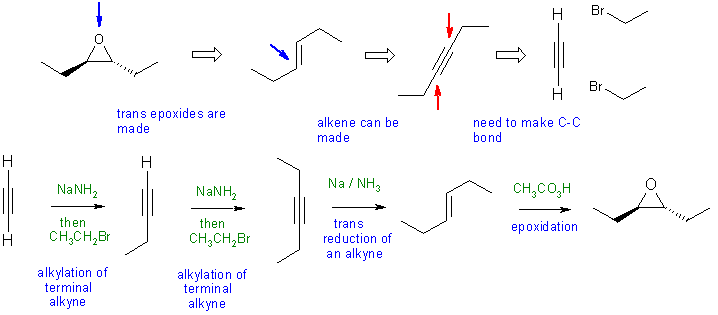
Answers to the synthesis problems are given below. These answers have been selected as they are short and efficient, but there are probably other reasonable solutions. Note some targets have specific stereochemistry that needs to be considered.
When planning syntheses, one should try to work backwards by functional group analysis. The diagrams show the "retrosynthesis" - the design or plan and then below that the reaction scheme step-by-step (as required in the question). Red arrows try to show carbon-carbon bond forming reactions, blue arrows are functional group manipulations. The blue text rationalise the retrosynthetic analysis and information about important reactions are given in green.

Notes:in order the get trans ethyl groups in the epoxide, you need to use a trans-alkene.
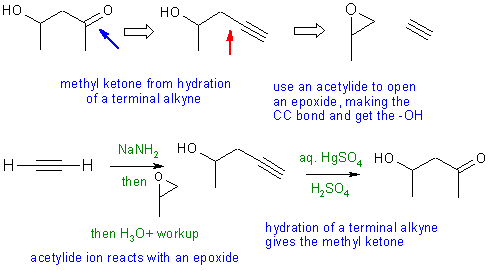
Notes: You can not use acetylides as nucelophiles on molecules with -OH groups since they will under go an acid / base reaction
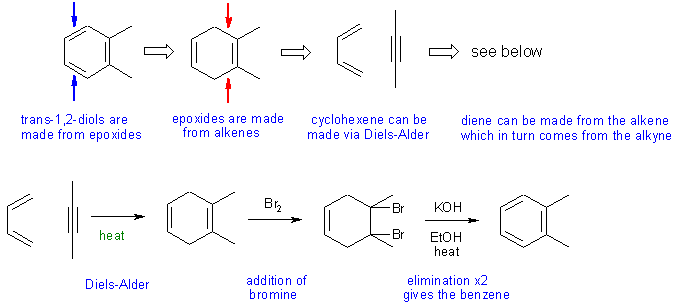
Notes: not a popular question even though it's reasonably simple once you have the Diels-Alder in mind.
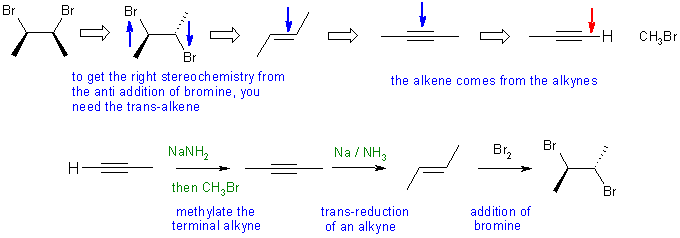
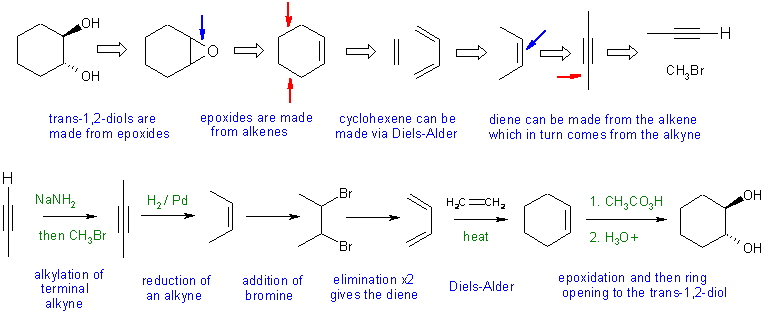
Notes: the most common problems were poor control of the regiochemistry, wrong structures for the Diels-Alder or the reagent for epoxidation.
General comments.... Lots of students made more use of Chem 351 reactions over 353 reactions. It's important to note that the 353 materials are often more selective and therefore give better control than the 351 reactions students elected to use. In addition, the question allowed students to start from compounds with 3 C or less. Lots of students started from hydrocarbons with 3 C or less and then made errors in making the materials they could have just used as starting materials.
Other common errors include (1) incorrect counting of C atoms, (2) trying SN reactions on vinyl halides (3) wrong reagents for transformations